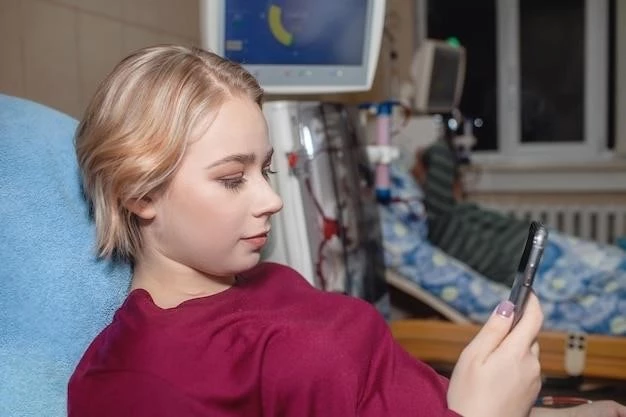Introduction to Pseudoadrenoleukodystrophy
Pseudoadrenoleukodystrophy, also known as Peroxisomal Acyl-CoA Oxidase Deficiency, is a rare neurodegenerative disorder that affects infants․ It is characterized by symptoms like seizures, hypotonia, and distinctive facial features․ The condition is associated with mutations in the ACOX1 gene․
Peroxisomal Acyl-CoA Oxidase Deficiency, also known as pseudoneonatal adrenoleukodystrophy, is characterized by symptoms like seizures and abnormal pyramidal signs․ This disorder is related to d-bifunctional protein deficiency and adrenoleukodystrophy, associated with mutations in the ACOX1 gene․ It causes neurodegeneration in infants٫ impacting nervous system functions and leading to distinctive facial features․
Overview of Peroxisomal Acyl-CoA Oxidase Deficiency
Peroxisomal Acyl-CoA Oxidase Deficiency, also known as pseudoneonatal adrenoleukodystrophy, is associated with symptoms like seizures and abnormal pyramidal signs․ It is linked to genetic mutations in the ACOX1 gene related to peroxisomal beta-oxidation disorders, impacting neurodegeneration in infancy․
Symptoms and Signs of Pseudoadrenoleukodystrophy
Pseudoadrenoleukodystrophy, characterized by seizures and abnormal pyramidal signs, presents at birth with muscle hypotonia, severe psychomotor retardation, and potential failure to thrive․ Patients commonly experience blindness, deafness, and the onset of seizures in early weeks․ The condition affects the nervous system, causing developmental delays and distinctive facial features․
Gene Associated with Peroxisomal Acyl-CoA Oxidase Deficiency
The crucial gene associated with Peroxisomal Acyl-CoA Oxidase Deficiency is ACOX1 (Acyl-CoA Oxidase 1)․ Mutations in this gene contribute to the development of the disorder٫ impacting peroxisomal fatty acid beta-oxidation processes․ These genetic mutations are related to the neurodegenerative manifestations seen in individuals affected by this condition․
Diagnosis and Classification
The diagnosis of Pseudoadrenoleukodystrophy involves distinguishing from other peroxisomal disorders like Zellweger cerebrohepatorenal syndrome․ Diagnostic methods include genetic testing to identify mutations in the ACOX1 gene associated with the condition․
Distinguishing Between Different Peroxisomal Disorders
When differentiating between peroxisomal disorders, Pseudoadrenoleukodystrophy, also known as Peroxisomal Acyl-CoA Oxidase Deficiency, stands out due to its unique association with symptoms like seizures and abnormal pyramidal signs․ Distinguishing it from other disorders like Zellweger cerebrohepatorenal syndrome involves specific diagnostic methods focused on genetic testing for mutations in the ACOX1 gene․
Diagnostic Methods for Pseudoadrenoleukodystrophy
Diagnosing Pseudoadrenoleukodystrophy involves genetic testing to identify mutations in the ACOX1 gene․ Distinguishing it from other peroxisomal disorders like Zellweger cerebrohepatorenal syndrome is crucial for accurate diagnosis and appropriate treatment planning․
Management and Treatment Approaches
Treatment for Pseudoadrenoleukodystrophy involves managing symptoms like seizures and psychomotor retardation․ Current therapeutic strategies focus on supportive care to address individual needs, and research efforts are ongoing to develop targeted treatments for this rare neurodegenerative disorder․
Current Therapeutic Strategies for Pseudoadrenoleukodystrophy
Management of Pseudoadrenoleukodystrophy involves treating symptoms such as seizures and psychomotor retardation through supportive care strategies tailored to individual needs․ Ongoing research aims to develop targeted therapeutic approaches for this rare neurodegenerative disorder․
Challenges in Treating Peroxisomal Acyl-CoA Oxidase Deficiency
Treating Peroxisomal Acyl-CoA Oxidase Deficiency presents challenges due to its neurodegenerative nature and the impact it has on nervous system functions․ Managing symptoms like seizures and psychomotor retardation requires tailored supportive care, and advancements in therapeutic strategies are needed to address the complex manifestations of this rare disorder effectively․

Epidemiology and Prognosis
The prevalence of Pseudoadrenoleukodystrophy is rare, with a frequency of less than 1 in 1,000,000 individuals․ This neurodegenerative disorder typically presents in the neonatal period, impacting various organ systems and leading to a complex clinical course․ Prognosis for individuals with Peroxisomal Acyl-CoA Oxidase Deficiency varies based on the severity of symptoms and the timely implementation of supportive care measures․
Prevalence of Pseudoadrenoleukodystrophy
Pseudoadrenoleukodystrophy is a rare neurodegenerative disorder, with a prevalence of less than 1 in 1,000,000 individuals․ This condition typically presents in the neonatal period, impacting various organ systems and requiring specialized medical management․
Long-term Outlook for Individuals with Peroxisomal Acyl-CoA Oxidase Deficiency
Individuals diagnosed with Peroxisomal Acyl-CoA Oxidase Deficiency face a challenging long-term outlook due to the neurodegenerative nature of the disorder․ The variability in symptom severity and the impact on multiple organ systems necessitate comprehensive medical management and ongoing support to address the complex needs associated with this rare condition․
Research and Future Directions
Advancements in understanding Pseudoadrenoleukodystrophy focus on addressing the neurodegenerative impact of this disorder․ Research efforts aim to identify potential areas of investigation for improved management, targeted treatments, and enhanced support for individuals affected by this rare condition․
Advancements in Understanding Pseudoadrenoleukodystrophy
Progress in understanding Pseudoadrenoleukodystrophy focuses on unraveling the disease’s neurodegenerative mechanisms․ Research strives to identify potential areas for improved management tailored to address the complex manifestations of this rare disorder effectively․ Ongoing studies aim to pave the way for targeted treatments and enhanced support for individuals affected by this condition․
Potential Areas of Investigation for Improved Management
Future research directions for Pseudoadrenoleukodystrophy aim to explore improved management strategies tailored to address the complex nature of this rare neurodegenerative disorder․ Investigations may focus on identifying novel therapeutic targets, enhancing supportive care measures, and optimizing treatment outcomes for individuals affected by this condition․

Support Resources and Patient Communities
For individuals affected by Peroxisomal Acyl-CoA Oxidase Deficiency, online platforms like Bens Friends AdrenoleukodystrophySupport․org provide a supportive community for sharing information, discussions, and mutual support; Connecting with these resources can offer valuable insights and assistance for patients and their families facing challenges associated with this rare condition․
Online Platforms for Individuals Affected by Peroxisomal Acyl-CoA Oxidase Deficiency
Platforms like Bens Friends AdrenoleukodystrophySupport․org offer a virtual community for individuals with Peroxisomal Acyl-CoA Oxidase Deficiency․ These online resources provide a safe space for sharing information, engaging in discussions, and providing mutual support for patients and their families․
Support Groups and Information Services for Pseudoadrenoleukodystrophy
Support resources for Pseudoadrenoleukodystrophy include platforms like Bens Friends AdrenoleukodystrophySupport․org, offering information, discussions, and mutual support․ These services provide a safe space for patients and families to connect and access valuable resources related to managing this rare neurodegenerative disorder․
